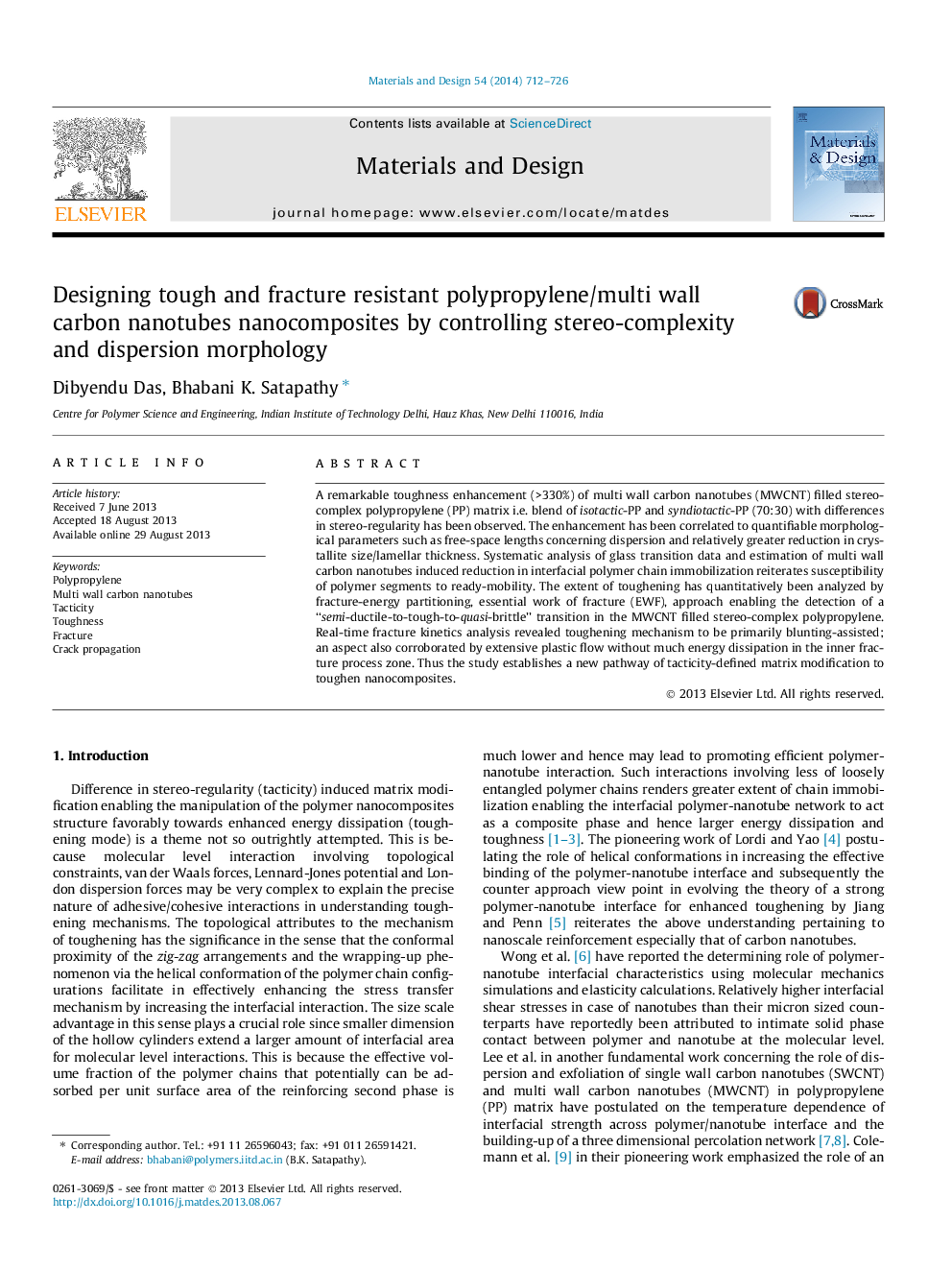| Article ID | Journal | Published Year | Pages | File Type |
|---|---|---|---|---|
| 829693 | Materials & Design (1980-2015) | 2014 | 15 Pages |
•New pathway to improve dispersion and toughness by tacticity modification.•>330% toughness enhancement in PP/MWCNT nanocomposites with stereo-complex PP.•Prominent dispersion and distribution morphology due to matrix stereocomplexity.•Tacticity induced “Semi-ductile-to-tough-to-quasi-brittle” transitions in the PP/MWCNT.•Two-fold reduced steady state CTOD rate in i-PP+s-PP/ MWCNT nanocomposites.
A remarkable toughness enhancement (>330%) of multi wall carbon nanotubes (MWCNT) filled stereo-complex polypropylene (PP) matrix i.e. blend of isotactic-PP and syndiotactic-PP (70:30) with differences in stereo-regularity has been observed. The enhancement has been correlated to quantifiable morphological parameters such as free-space lengths concerning dispersion and relatively greater reduction in crystallite size/lamellar thickness. Systematic analysis of glass transition data and estimation of multi wall carbon nanotubes induced reduction in interfacial polymer chain immobilization reiterates susceptibility of polymer segments to ready-mobility. The extent of toughening has quantitatively been analyzed by fracture-energy partitioning, essential work of fracture (EWF), approach enabling the detection of a “semi-ductile-to-tough-to-quasi-brittle” transition in the MWCNT filled stereo-complex polypropylene. Real-time fracture kinetics analysis revealed toughening mechanism to be primarily blunting-assisted; an aspect also corroborated by extensive plastic flow without much energy dissipation in the inner fracture process zone. Thus the study establishes a new pathway of tacticity-defined matrix modification to toughen nanocomposites.
Graphical abstractFigure optionsDownload full-size imageDownload as PowerPoint slide
